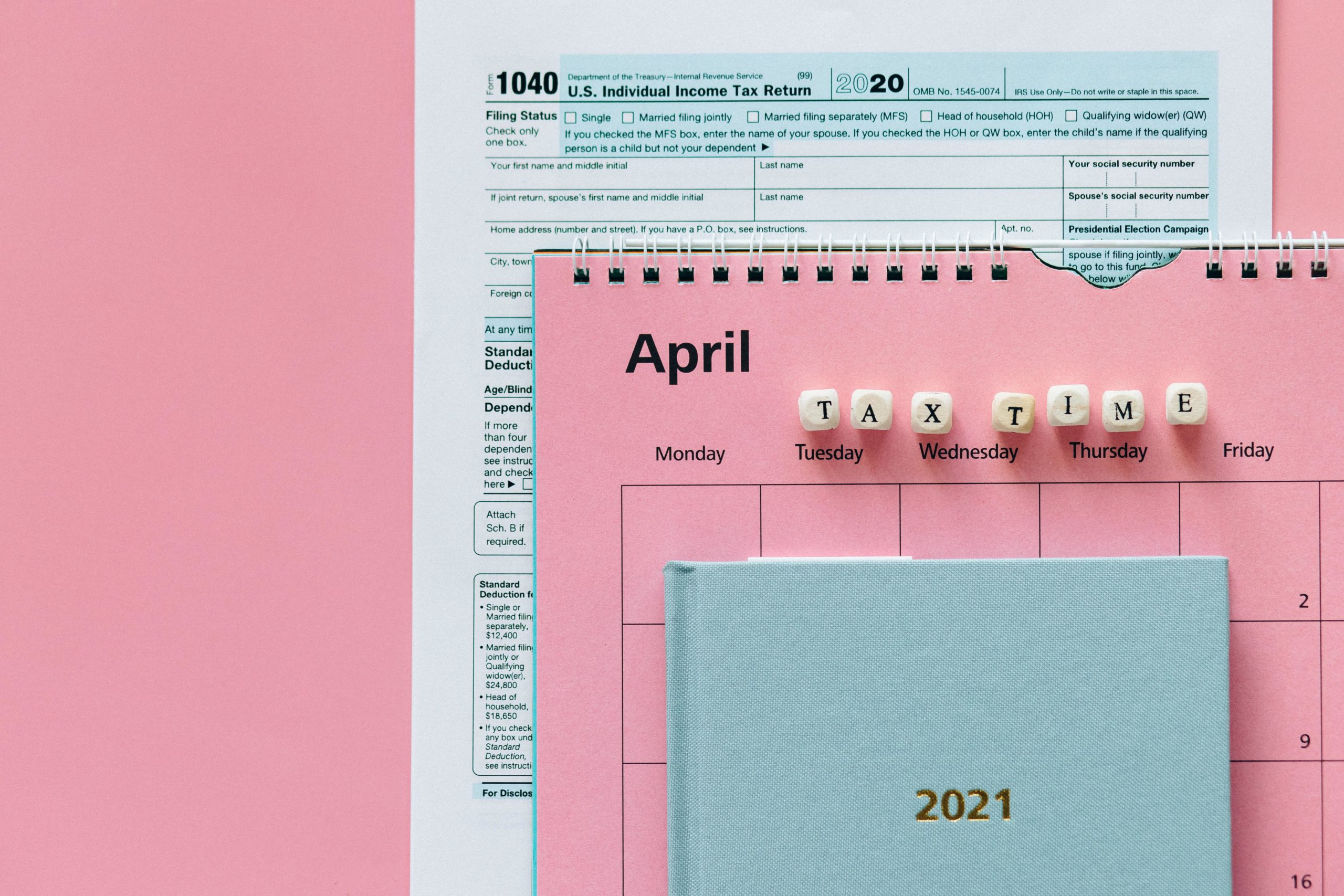
Just this week, both the House and Senate passed new legislation called the American Rescue Plan Act of 2021, or ARP for short, and was signed by the President. Within this bill, there are significant changes to the tax code that will apply to 2021 and beyond. Some of these changes are currently scheduled to be temporary, ending after this year, while other benefits apply retroactively to 2020, the year that most of us would like to forget! This legislation is packed full of changes that will alter how many people’s returns will look in 2021. Although these changes are important, there are too many to discuss in the scope of this post and will be addressed in a future blog.
In this post we will review the changes that apply to 2020 returns. In this instance, maybe the early bird does not get the worm, and if you have not filed your return yet it may make sense to hold off until some of these changes are implemented or you may need to amend your taxes later. Here’s what you should know about the new tax law and how it may impact your 2020 taxes.
More Advanced Tax Credits (stimulus payments) on the way
One of the staple provisions of both the CARES Act and the Consolidated Appropriations Act passed at the end of 2020 was the issuance of direct payments to individuals. Although these payments were sent in 2020, they were based on your 2019 tax return and were expected to be reconciled when you filed your return this year. If you received more than you should have, no problem, you get to keep the excess amount you received tax free! If you did not get the amount you were supposed to, you received the difference as a tax credit on your 2020 return .
With the passing of the ARP there are additional direct payments scheduled to be sent with similar stipulations as the previous payments. These payments are scheduled to be $1,400 per eligible individual (more on that later). However, because of the timing of these payments, there may be some unique financial planning considerations when it comes to filing your 2020 tax return.
How do the payments work?
Like the previous two direct payments, it is an advanced tax credit that is intended to be based on your current year (2021) adjusted gross income (AGI). However, since neither you or the IRS knows what your income will be for the year, they’re paying these payments out early and basing them off the most recent tax return the IRS has on file. For many, it will be their 2019 return, but, if you already filed your 2020 return they may use that. However, since it’s intended to be a 2021 credit, if you did not receive a payment based on your prior year income, but qualify based on your 2021 income, you will receive the credit when your file your return next year. Also like last time there is no clawback! Meaning, if you receive a payment this year, but your income is too high to qualify in 2020 you do not need to pay any of the money back. It’s tax-free money you get to use!
Who Qualifies for the payments?
As before, the payments are based on your adjusted gross income (AGI). To keep things simple, they even used the same initial thresholds to determine eligibility. If your AGI was below $75,000 if filing single, or $150,000 if married filing joint you are eligible to receive the full $1,400 payment per person. If your AGI is above these amounts the amount of your benefit starts to be reduced. If your income exceeds $80,000 if single, or $160,000 if married you will not receive any payment at all! If your income is somewhere in between you receive a prorated amount.
Ex: Mary and Mike file a joint return, have no kids, had an AGI of $155,000 in 2019, and have not filed their 2020 return yet. Their “base” stimulus payment is $2,800 ($1,400 * 2). However, because their income was in the middle of the threshold, they are only eligible for half the payment (($160,000 – $155,000) / $10,000 = 50% reduction). They would receive a $1,400 payment.
Another change to these payments is that more individuals qualify. For the last payments, only children eligible for the child tax credit (children under age 17) were eligible for additional money. This time around, the definition changes to “dependents” on your tax return. This will still include children under 17, but also children you support who are in college, or even elderly or ill family members you are fully supporting and claim as a dependent on your tax return. This means more people will receive larger payments based on this expanded definition. Each dependent adds another $1,400 to the total base stimulus amount.
Ex: Jack and Diane have filed their 2020 return and had an AGI of $100,000 in 2020 making them eligible for the full payment. They have 2 children, one is 15 in high school, and the other is 19 in college. Both kids are claimed as dependents. In this case their payment would be $5,600 ($1,400 * 4). In 2021 they earned much more money and their AGI ended up being $200,000. However, because they already received the payment they do not need to pay it back.
When are the payments sent?
Soon. The bill is now signed into law, and the IRS will begin issuing payments shortly. Assuming you qualify for a payment you may see it hit your bank account in a week or two. But unlike the previous payments, this payment will attempt to determine eligibility a few times.
If your income was too high the last time around you had to wait to file your tax return to true-up if you were eligible. This time, since most people will still have their 2019 return on file, it may not accurately reflect their situation in 2020 disqualifying them for the initial payment. Instead of having to wait a whole year, the IRS will review your situation again by the earlier of 9/1/21 or 90 days after the tax filing deadline (currently April 15th). By that time, unless you file for an extension, most taxpayers should have their 2020 return on file. If you qualify then, you should receive a payment. If you did not qualify based on that return because your 2020 income was too high, or you hadn’t filed your 2020 return yet, you get a last chance when you file your 2021 tax return if your income was low enough. Essentially the IRS will look 3 times to determine eligibility and send you the money to make up any difference if you were eligible.
Ex: John and Jane are married with no kids. Their AGI was $155k in 2019 and they have not filed their 2020 tax return yet. They received $1,400 (half their base payment) because their income was too high. They file their 2020 return on April 1st and had an AGI of $100,000. On July 15th (90 days after the current tax filing deadline) their 2020 return is now on file with the IRS and they are eligible for the entire payment. To make up the difference they receive another $1,400.
Tax planning opportunities
Everyone’s tax situation is different, and depending on yours it may make sense to hold off filing your 2020 return because of these payments. The IRS will be reviewing your tax return up to 3 times to determine eligibility, and depending on when you file, that could be three different tax years (2019, 2020, and 2021) with radically different reported incomes. If your AGI qualifies based on your 2019 return but not your 2020 it may make sense to delay filing so that they use your 2019 return to determine eligibility. If you don’t qualify based on your 2021 income you do not need to pay the amounts received back.
Alternatively, if your 2019 income does not qualify, your 2020 income does, but your 2021 income may not, you’ll want to make sure that you get your return in on time. Tax filers have the option to put their return on extension and do not need to file until October 15th. If your 2020 income qualifies and you delay filing until after the second income check (the earlier of September 1st or 90 days after the normal tax filing deadline, April 15th) you may not receive a payment if your 2021 AGI does not qualify.
Ex: Phil is single and had an AGI of $100,000 in 2019. He has not filed his tax return yet and did not receive a payment because his AGI was too high. He lost his job in 2020 and only had an AGI of $50,000 making him eligible for the full $1,400 payment. Phil found a new job in 2021 and was so busy that he had no time to file his 2020 return and put it on extension. He finally filed his return on October 1st of 2021. This year he once again earned $100,000 putting him above the limit. Since the IRS never had his 2020 return on file when they checked for his income, he never received it, and is no longer eligible for the payment.
Most of the time tax planning has to do with decisions made during the tax year. However, for your 2020 return, some of the planning may have to do with when you actually file. It may make sense to work with a fiduciary financial advisor who reviews these tax law changes regularly and notifies you when these alterations impact your personal financial situation.
Tax-free unemployment income
It’s an unfortunate fact that many people became unemployed in 2020. Thankfully, many unemployment benefits were extended and enhanced from previous legislation. Many more people than usual received unemployment income in 2020, but what many don’t realize is that unemployment income is actually taxable. To alleviate some of this burden, the ARP allows for some unemployment income to be considered tax-free in 2020 depending, once again, on your AGI.
Who is eligible for tax-free unemployment income?
Some of the finer details are still murky, but is appears that individuals whose AGI is less than $150,000 are eligible to receive up to $10,200 of unemployment income tax-free. At this time, this AGI limit appears to include all tax filing designations (single, jointly, head of household, etc.). If your income is even $1 over that amount, all of your unemployment income is taxable.
If you file jointly, it appears that each individual is eligible for their own $10,200 exemption ($20,400 total). This can be a welcome reprieve for those who did not have any, or enough, tax withheld from their unemployment benefits who otherwise may have been in for nasty surprise on their 2020 return.
How does this affect your 2020 return?
If you have not filed already, received unemployment benefits, and qualify based on your AGI, it probably makes sense holding off filing your return. It will take the tax software some time to retroactively update to account for this change to the tax code. If you file too soon you may end up paying tax on unemployment benefits that you don’t have to. If you do that, you can always file an amendment to your tax return to recoup the extra taxes paid. However, it will take more of your time to file, it will take longer to receive the refund, and you would likely incur additional charges from your tax preparer or tax software to do so. It’s probably better just to wait a little longer and make sure everything is updated correctly.
Premium tax credit overpayments
For many Americans, ensuring they have adequate health insurance coverage is a primary financial concern. This usually means having access to health insurance through your employer. But what do you do if you lose your job? Depending on the size of your previous employer you may be able to stay on your health insurance through COBRA, although you would now likely need to pay the full cost without any employer subsidy. Alternatively, you could look to get health insurance through your state’s health insurance exchange.
One of the benefits of going through the exchange is that, depending on your income, you may be eligible for a premium tax credit which reduces the out of pocket cost you have to pay for coverage. Like the stimulus payments, this tax credit can be received in advance, reducing your monthly premium cost. However, unlike the payments, if you receive more than you should have you need to pay the excess back.
The tricky part with applying for the credit is that you need to estimate what your income will be for the year, which can be difficult to do, especially in a year like 2020. It’s a balancing act where you try not to receive too much where you’ll have to pay some back, but not receive too little where monthly premiums can be burdensome (although if you are eligible for a larger credit you will receive it back when you file).
For 2020 only, if you received a larger credit than you should have you do not need to pay it back. You get to keep the additional money that year without any negative tax repercussions. This is only for tax-year 2020, and if you receive too much of a credit in future years you will need to pay back the money as normal. But for such an unusual year, this will come as a welcome benefit for anyone who, arguably justifiably, was unable to estimate their income accurately last year.
How does this affect your 2020 return?
Like with the unemployment taxability changes, it will take some time for the tax software to retroactively update to account for this. If you haven’t filed already, and this applies to you, it probably makes sense to hold off so you don’t have to repay any excess amounts received from the premium tax credit. Otherwise, like before, you will probably need to amend your return to account for this update.
Summary
The 2020 tax year may be over, but the tax law changes keep coming. With this most recent legislation, there have been changes to stimulus payments, unemployment compensation, and the premium tax credit. If you haven’t filed your return yet, and one or more of these situations apply to you, it may make sense to hold off for a little longer. Of course, there were numerous other changes that will apply to the 2021 tax year that may provide additional tax-planning opportunities. As more details emerge, we will provide information on these changes on how they may impact your future tax planning.
This is not to be considered tax or financial advice. Please review your personal situation with your tax and/or financial advisor. All advisors at Milestone Financial Planning, LLC, a fee-only financial planning firm in Bedford, NH. Milestone work with clients on a long-term, ongoing basis. Our fees are based on the assets that we manage and may include an annual financial planning subscription fee. Clients receive financial planning, tax planning, retirement planning, and investment management services, and have unlimited access to our advisors. We receive no commissions or referral fees. We put our clients’ interests first. If you need assistance with your investments or financial planning, please reach out to one of our fee-only advisors .



